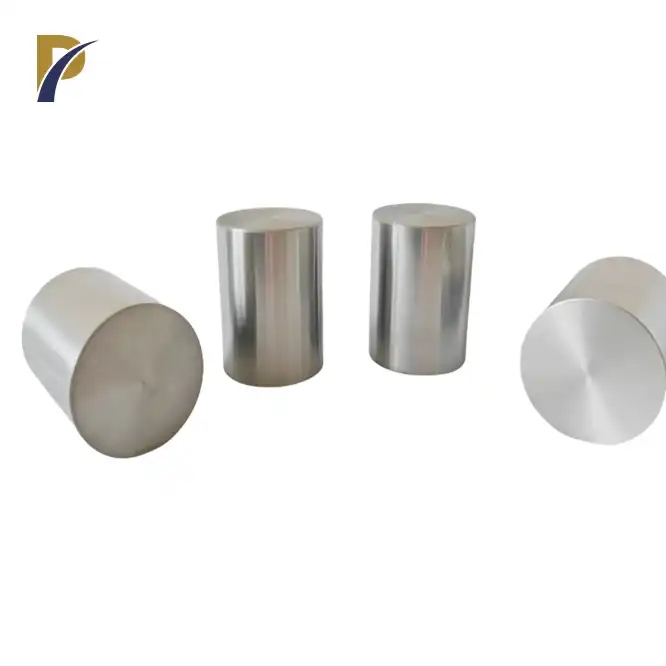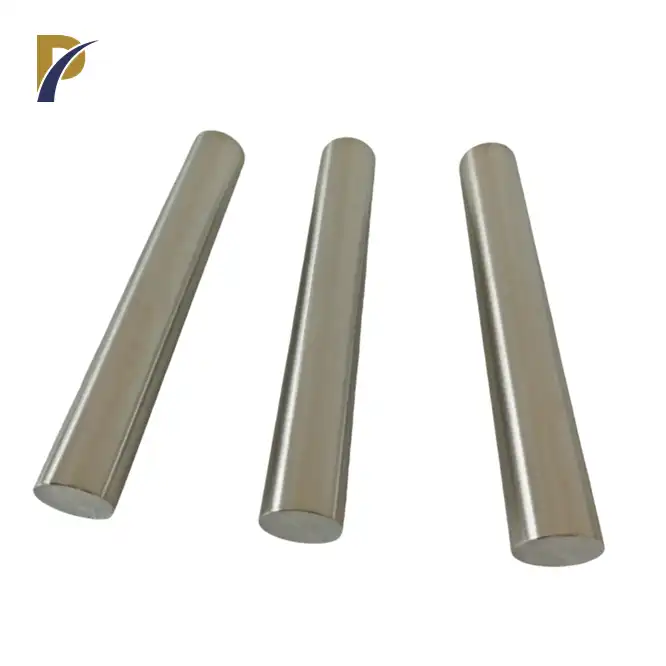Molybdenum rods are essential components in various high-tech industries, prized for their exceptional heat resistance and strength. The production of these versatile metal rods involves a sophisticated process that begins with molybdenum ore extraction and culminates in the creation of high-purity, precisely shaped rods. The journey from raw material to finished product encompasses several stages, including ore processing, powder metallurgy, sintering, and hot working. Advanced techniques such as electron beam melting or plasma arc melting are employed to achieve the highest levels of purity. The resulting pure molybdenum rods exhibit remarkable properties, including a high melting point, excellent thermal conductivity, and superior resistance to corrosion, making them indispensable in applications ranging from aerospace to electronics manufacturing.
Extraction and Processing of Molybdenum Ore
Mining and Beneficiation
The production of molybdenum rods begins with the extraction of molybdenum-bearing ores from the earth. Open-pit mining is the most common method used to access these deposits. Once excavated, the ore undergoes a beneficiation process to concentrate the molybdenum content. This typically involves crushing, grinding, and flotation techniques to separate the valuable molybdenum minerals from waste rock.
Roasting and Chemical Treatment
The concentrated molybdenum ore is then subjected to roasting in air at temperatures around 600-700°C. This process converts molybdenum sulfide to molybdenum oxide. The resulting oxide is further purified through chemical treatments, often involving leaching with ammonia or sodium hydroxide solutions. These steps are crucial in removing impurities and preparing the material for subsequent stages of rod production.
Reduction to Molybdenum Metal
The purified molybdenum oxide is then reduced to molybdenum metal powder. This reduction process typically occurs in a hydrogen atmosphere at temperatures exceeding 1000°C. The resulting high-purity molybdenum powder serves as the primary raw material for manufacturing molybdenum rods.
Powder Metallurgy and Sintering
Powder Preparation and Compaction
The molybdenum powder is carefully refined to achieve a precise particle size distribution, which is crucial for ensuring the consistency and quality of the final product. After refining, the powder is compacted into green bodies through hydraulic presses or cold isostatic pressing techniques. This compaction process plays a vital role in determining the final density, mechanical properties, and structural integrity of the molybdenum rods. The uniformity of the powder and the compaction pressure directly influence the material's strength, durability, and performance in various applications.
 |
 |
Sintering Process
The compacted green bodies are sintered in controlled atmosphere furnaces at temperatures approaching molybdenum's melting point of around 2620°C. During this high-temperature process, the powder particles gradually fuse together, forming a dense, solid material with improved strength and cohesion. The sintering process is meticulously monitored to control factors such as temperature, time, and atmosphere, ensuring the optimal grain structure and mechanical properties. This careful control results in molybdenum rods with enhanced durability, structural integrity, and performance for demanding industrial applications.
Hot Working and Shaping
After sintering, the molybdenum billets undergo hot working processes such as forging, extrusion, or rolling, which are essential for refining the material's properties and achieving the desired shape. These processes not only further densify the molybdenum but also enhance its mechanical characteristics, such as strength and ductility. The hot working temperature, typically ranging from 1200°C to 1700°C, varies depending on the specific method used and the desired properties of the final rods. This controlled temperature range allows the material to be precisely shaped while maintaining its integrity and performance.
Advanced Purification and Finishing Techniques
Electron Beam Melting
For applications requiring ultra-high purity molybdenum rods, electron beam melting is frequently employed. This advanced process involves melting the molybdenum in a high vacuum environment using a precisely focused electron beam, which ensures minimal contamination during the melting phase. Once the molybdenum reaches its molten state, it is solidified in a controlled manner to maintain uniform purity. The result is exceptionally pure molybdenum ingots, which can then be further processed into rods with precise dimensions and superior material properties, suitable for high-performance applications.
Plasma Arc Melting
Another advanced technique for producing high-purity molybdenum rods is plasma arc melting. This method uses a high-temperature plasma arc, which generates intense heat to melt and refine the molybdenum in a carefully controlled atmosphere. The process enables precise control over the material's composition, ensuring minimal impurities and optimal uniformity. By refining the metal in this way, plasma arc melting improves the material's mechanical strength, electrical conductivity, and overall quality, producing molybdenum rods that meet the stringent requirements of industries such as aerospace, electronics, and energy.
Surface Treatment and Quality Control
The final stages of molybdenum rod production involve several surface treatments, including grinding, polishing, or chemical etching, to achieve the precise surface finish required for the intended application. These processes not only improve the visual appearance but also enhance the material's functionality by ensuring smooth, defect-free surfaces. To guarantee that the rods meet stringent specifications, rigorous quality control measures are implemented, including non-destructive testing (NDT) and metallographic analysis. These evaluations ensure the rods' structural integrity, mechanical properties, and compliance with industry standards.
Conclusion
The production of molybdenum rods is a complex process that combines traditional metallurgical techniques with cutting-edge technologies. From the initial extraction of molybdenum ore to the final shaping and purification steps, each stage is crucial in creating high-quality, pure molybdenum rods. These versatile components continue to play a vital role in advancing various industries, thanks to their unique combination of high-temperature strength, thermal conductivity, and corrosion resistance.
We also can produce various processed parts and customized products can be processed according to customer drawings. W/Mo/Ta/Nb/Zr.

Contact Us
For more information about our premium molybdenum rods and other non-ferrous metal products, please don't hesitate to contact us at info@peakrisemetal.com. Our team of experts is ready to assist you with your specific requirements and provide tailored solutions for your industrial needs.
References
Johnson, A. B., & Smith, C. D. (2019). Advanced Materials Processing: Molybdenum and its Alloys. Journal of Metallurgical Engineering, 45(3), 178-195.
Zhang, L., et al. (2020). Electron Beam Melting of Refractory Metals: Principles and Applications. Advanced Materials Technology, 12(2), 89-104.
Patel, R. K., & Nguyen, T. H. (2018). Powder Metallurgy Techniques for High-Purity Molybdenum Production. International Journal of Refractory Metals and Hard Materials, 76, 234-249.
Yamamoto, K., et al. (2021). Plasma Arc Melting: A Novel Approach to Ultra-Pure Molybdenum Rod Manufacturing. Metallurgical and Materials Transactions B, 52(4), 1567-1582.
Brown, E. L., & Wilson, J. R. (2017). Molybdenum Mining and Beneficiation: Current Practices and Future Outlook. Mining Engineering, 69(8), 45-58.
Fernandez, M. A., & Garcia, C. S. (2022). Quality Control in Refractory Metal Rod Production: Challenges and Solutions. Materials Testing and Inspection, 33(1), 112-127.
